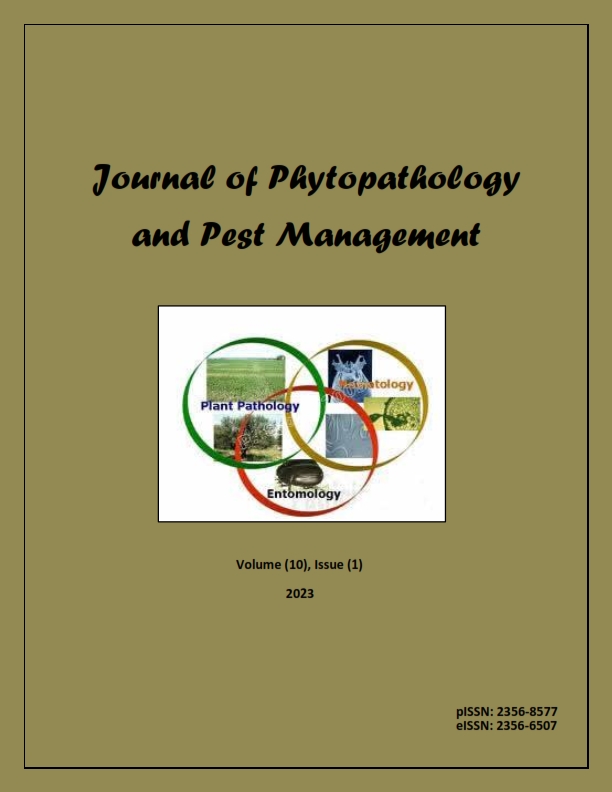Effect of eco-friendly treatments on onion downy mildew in a sustainable agricultural system
DOI:
https://doi.org/10.5281/zenodo.16889629Keywords:
Onion, Allium cepa, Peronospora destructor, bio-fungicide, Champ DPAbstract
Onion (Allium cepa L.) is an important agricultural crop in Egypt, valued for its contributions to both domestic consumption and exportation. However, onion cultivation faces significant challenges, particularly from downy mildew, which is caused by Peronospora destructor (Berk.) Casp. To evaluate the efficacy of various eco-friendly treatments in field trials against onion downy mildew, a range of biological control agents (Serenade ASO, Tricho Nitro Plus, Bio Control T34) and a natural fungicide (Champ DP) were applied. The results indicated that Champ DP was the most effective treatment, significantly reducing the severity of the disease by 80.3% and 76.4% after two and three months of application during the 2020-21 and 2021-22 growing seasons, respectively. Tricho Nitro Plus also performed well, demonstrating a reduction of 80.2% and 76.3% in disease severity. Importantly, all treatments led to an increase in onion bulb yield, as well as enhanced total carbohydrates, total soluble solids, and plant enzyme defenses. This research underscores the potential for integrating biological and natural fungicides to sustainably address the challenges posed by plant pathogens in onion plants, ultimately supporting local food security and agricultural export opportunities in Egypt.
Metrics
Published
How to Cite
Issue
Section
ARK
License
Copyright (c) 2023 Journal of Phytopathology and Disease Management

This work is licensed under a Creative Commons Attribution-NonCommercial 4.0 International License.
Click here for more information on Licensing policy

.png)




